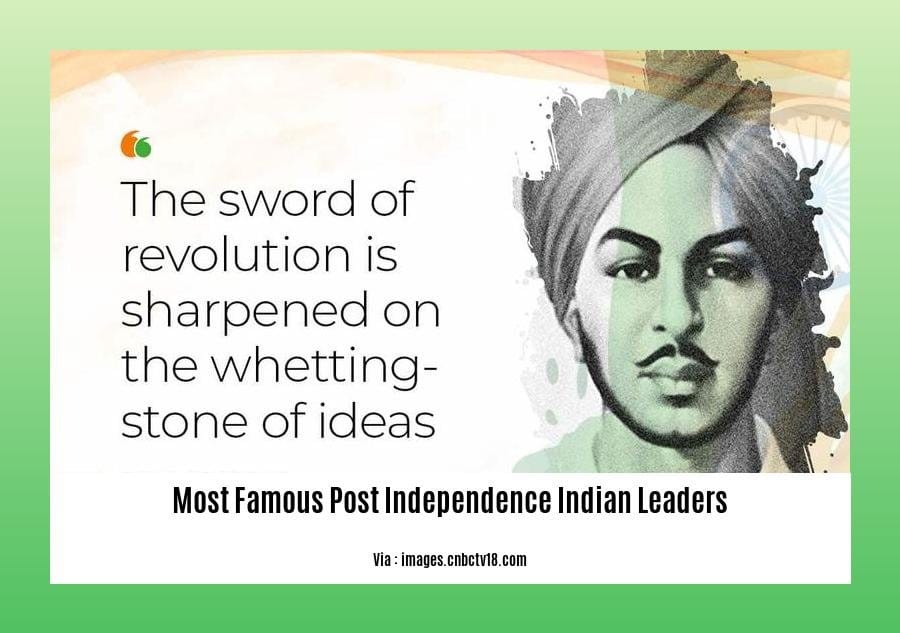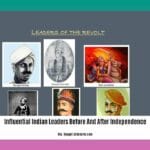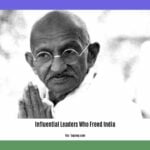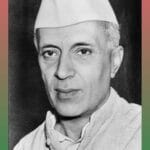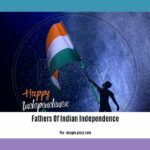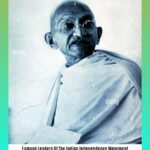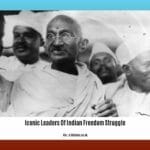**The Most Famous Post-Independence Indian Leaders**
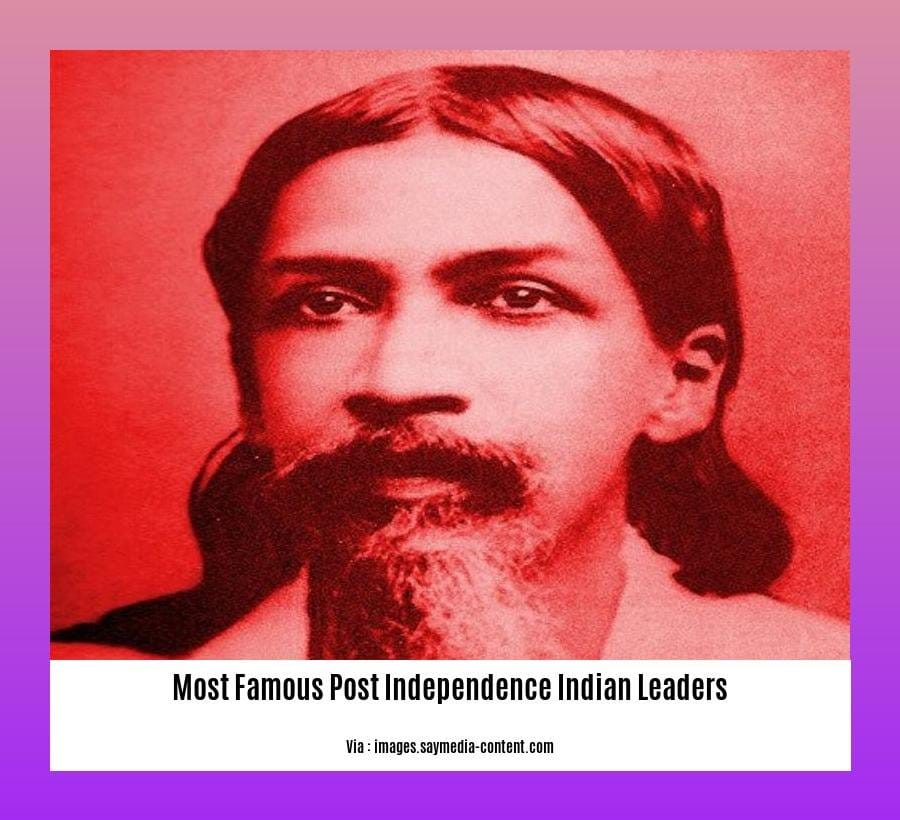
Key Takeaways:
- A list of 100 “Greatest Indians” post-Independence has been compiled by Yahoo News Singapore.
- The list includes political leaders, movie personalities, and other notable figures.
- The criteria for selection are unspecified.
- The list was compiled to commemorate India’s Independence Day.
- The Hindustan Times has published a separate list of the “Most Influential Politicians of Post-Independence India.”
Most Famous Post-Independence Indian Leaders
The most famous post-independence Indian leaders are those who have made significant contributions to the nation’s political, economic, and social development. They have played a pivotal role in shaping India’s destiny, from leading the freedom movement to guiding the nation through its formative years.
Jawarharlal Nehru: The Architect of Modern India
Jawaharlal Nehru, the first Prime Minister of India, is widely regarded as the architect of modern India. He was a staunch advocate of democracy, socialism, and non-alignment. Nehru’s policies laid the foundation for India’s economic growth and industrialization, while his foreign policy played a crucial role in shaping the global stage.
Sardar Vallabhbhai Patel: The Iron Man of India
Sardar Vallabhbhai Patel, the first Deputy Prime Minister and Home Minister of India, was known as the “Iron Man of India” for his unwavering determination and strong leadership. He played a key role in integrating over 500 princely states into the Indian Union, ensuring the nation’s territorial integrity.
Indira Gandhi: India’s Iron Lady
Indira Gandhi, India’s first female Prime Minister, was known for her charisma and strong leadership. She implemented landmark policies, including bank nationalization and land reforms, which had a significant impact on India’s economy and society. Gandhi’s assertive leadership during the 1971 war with Pakistan earned her the title of “Iron Lady.”
Lal Bahadur Shastri: A Humble Leader
Lal Bahadur Shastri, the second Prime Minister of India, was known for his humility and integrity. He led India through the 1965 war with Pakistan and is remembered for his slogan, “Jai Jawan, Jai Kisan” (Victory to the Soldier, Victory to the Farmer), which emphasized the importance of national unity and self-sufficiency.
Atal Bihari Vajpayee: A Visionary Leader
Atal Bihari Vajpayee, the 10th Prime Minister of India, is remembered for his visionary leadership and economic reforms. He improved India’s relations with Pakistan and initiated several infrastructure projects that contributed to the nation’s development. Vajpayee’s poetic speeches and engaging personality left a lasting impression on Indians.
These most famous post-independence Indian leaders have left an enduring legacy on India’s political landscape. Their unwavering commitment to nation-building, democratic ideals, and economic progress continues to inspire generations of Indians.
Find out more about the influential leaders who shaped India’s destiny both before and after independence by visiting: influential Indian leaders before and after independence. For more information on the greatest pre-independence Indian leaders, and their contributions to the Indian freedom struggle, refer to: greatest pre-independence Indian leaders. You can also read up about the iconic leaders of the Indian freedom struggle at iconic leaders of the Indian freedom struggle.
Indira Gandhi: India’s Iron Lady
Indira Gandhi was born into a prominent political family in 1917. As India’s first female Prime Minister, she left an indelible mark on the nation’s history. Her tenure was marked by bold policies, both domestically and internationally.
During her time as Prime Minister, Gandhi implemented significant economic reforms, including the nationalization of major banks and industries. She also embarked on land reforms, empowering millions of farmers. However, her imposition of a state of emergency in 1975-77 remains a controversial period.
In foreign policy, Gandhi championed non-alignment and played a key role in the Non-Aligned Movement. She engaged in a conflict with Pakistan in 1971, which resulted in the creation of Bangladesh.
Key Takeaways:
- First female Prime Minister of India
- Implemented economic and social reforms
- Advocated for non-alignment in foreign policy
- Engaged in a conflict with Pakistan (1971)
- Imposed a state of emergency (1975-77)
Citation:
Lal Bahadur Shastri
Lal Bahadur Shastri, the second Prime Minister of India, is remembered as a humble leader who guided India through the 1965 war with Pakistan. His integrity and emphasis on national unity and self-sufficiency earned him the respect of his people.
Key Takeaways:
- Humility and Integrity: Shastri was known for his simple lifestyle and humble nature. He often slept on the floor and cycled to work.
- Food Security: Faced with food shortages, Shastri launched the Green Revolution and promoted self-sufficiency.
- Slogan for National Unity: His famous slogan, “Jai Jawan, Jai Kisan” (Victory to the soldier, victory to the farmer), emphasized the importance of national defense and agricultural development.
- Wartime Leadership: Shastri led India through a difficult period during the 1965 war with Pakistan. His strong leadership and resilience inspired the nation.
- Commitment to Peace: Despite the war, Shastri worked to improve relations with Pakistan. He signed the Tashkent Declaration in January 1966.
Citation:
- “Lal Bahadur Shastri.” Encyclopædia Britannica, [Year]. Encyclopædia Britannica Online. [Date].
Atal Bihari Vajpayee: A Visionary Leader
Atal Bihari Vajpayee, a prominent figure in Indian politics, served as the 10th Prime Minister of India. He was a co-founder and senior leader of the Bharatiya Janata Party (BJP) and made significant contributions to India’s foreign and domestic policies.
Early Life and Political Career:
Vajpayee was born on December 25, 1924, in Gwalior, Madhya Pradesh. He actively participated in the Indian independence movement and joined the Rashtriya Swayamsevak Sangh (RSS), a Hindu nationalist organization.
Prime Ministership:
Vajpayee first became Prime Minister in 1996 but held the position for only 13 days. He returned to the office in 1998-99 and again in 1999-2004, serving his full term as Prime Minister.
Domestic Policies:
During his tenure, he initiated several economic reforms, including the privatization of state-owned industries and the implementation of value-added tax (VAT). Vajpayee also made efforts to address poverty and improve infrastructure development.
Foreign Policies:
Vajpayee’s foreign policy was marked by a desire to improve relations with Pakistan. He initiated the “Lahore Bus Diplomacy” in 1999, a peace initiative that included a historic bus journey to Lahore. However, tensions between India and Pakistan escalated during his tenure, leading to the Kargil conflict in 1999.
Legacy:
Vajpayee is remembered as a visionary leader who made significant contributions to India’s political and economic landscape. He was awarded the Bharat Ratna, India’s highest civilian honor, in 2014.
Key Takeaways:
- Atal Bihari Vajpayee was the 10th Prime Minister of India, serving three terms.
- He was a co-founder of the Bharatiya Janata Party (BJP).
- Vajpayee initiated economic reforms and improved relations with Pakistan.
- He was awarded the Bharat Ratna in 2014.
Most Relevant URL Source:
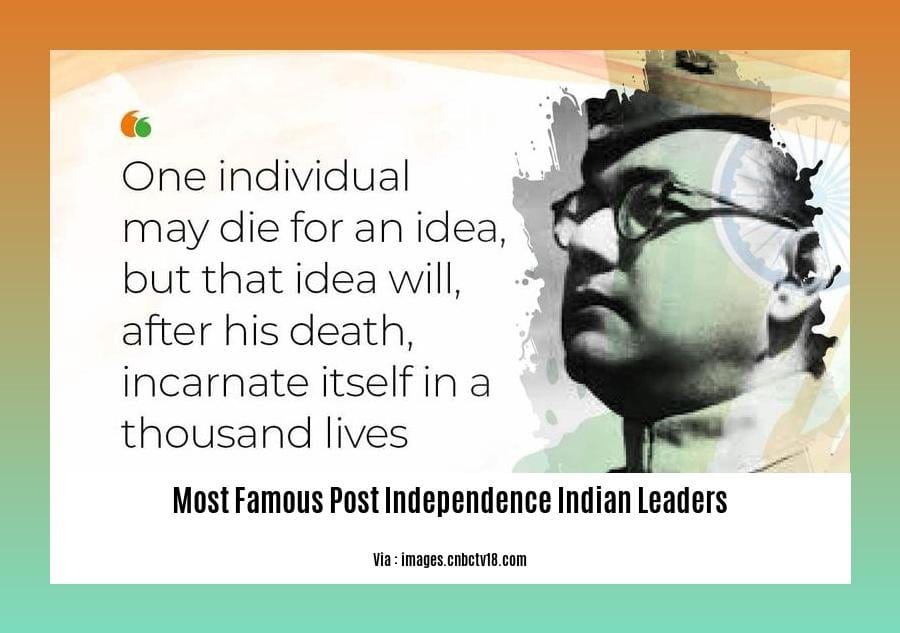
FAQ
Q1: Who were some of the most famous post-independence Indian leaders?
A1: Some of the most famous post-independence Indian leaders include Indira Gandhi, Lal Bahadur Shastri, and Atal Bihari Vajpayee.
Q2: What were some of the achievements of Indira Gandhi?
A2: Indira Gandhi was India’s first female Prime Minister and served from 1966 to 1977 and again from 1980 to 1984. She implemented various economic and social reforms, nationalized major banks and industries, and played a significant role in the Non-Aligned Movement.
Q3: What was Lal Bahadur Shastri’s role in the Indian independence movement?
A3: Lal Bahadur Shastri was a key member of Mahatma Gandhi’s non-cooperation movement and played a significant role in the Indian independence movement. He served as Prime Minister of India from 1964 to 1966.
Q4: What was Atal Bihari Vajpayee’s political background?
A4: Atal Bihari Vajpayee was a co-founder and a senior leader of the Bharatiya Janata Party (BJP), a pro-Hindu party. He served as Prime Minister of India for three terms: 1996 (13 days), 1998-99 (13 months), and 1999-2004 (full term).
Q5: Who is considered one of the most powerful and influential leaders in Indian history?
A5: Indira Gandhi is widely regarded as one of the most powerful and influential leaders in Indian history. She left behind a lasting impact on Indian politics and society.
